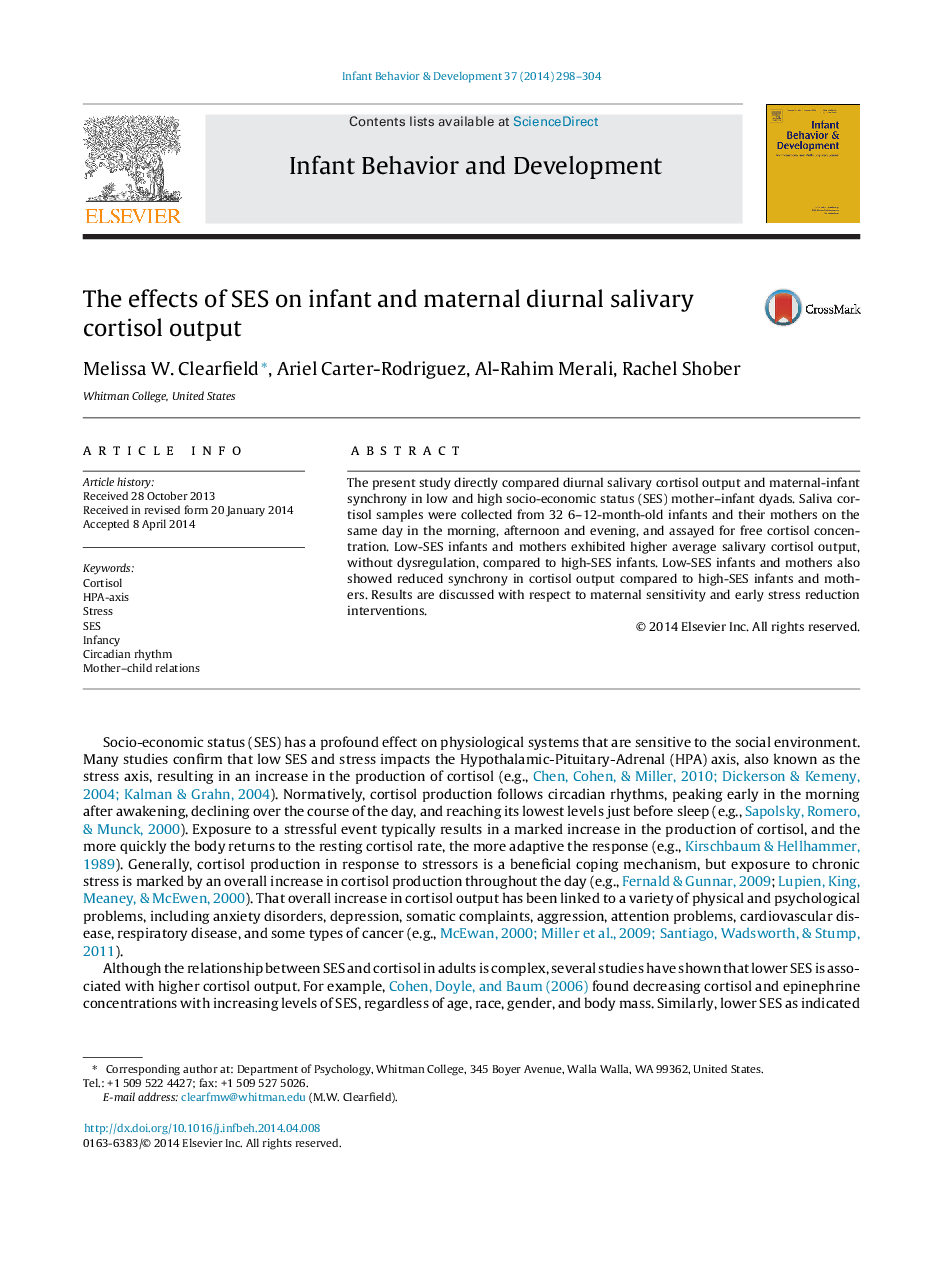| Article ID | Journal | Published Year | Pages | File Type |
|---|---|---|---|---|
| 10452652 | Infant Behavior and Development | 2014 | 7 Pages |
Abstract
The present study directly compared diurnal salivary cortisol output and maternal-infant synchrony in low and high socio-economic status (SES) mother-infant dyads. Saliva cortisol samples were collected from 32 6-12-month-old infants and their mothers on the same day in the morning, afternoon and evening, and assayed for free cortisol concentration. Low-SES infants and mothers exhibited higher average salivary cortisol output, without dysregulation, compared to high-SES infants. Low-SES infants and mothers also showed reduced synchrony in cortisol output compared to high-SES infants and mothers. Results are discussed with respect to maternal sensitivity and early stress reduction interventions.
Related Topics
Life Sciences
Neuroscience
Behavioral Neuroscience
Authors
Melissa W. Clearfield, Ariel Carter-Rodriguez, Al-Rahim Merali, Rachel Shober,
